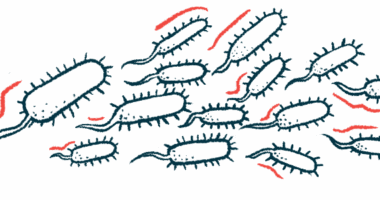Youngest case of primary CAD reported
Study describes 16-year-old girl with primary cold agglutinin disease

A rituximab-based therapy regimen successfully treated a 16-year-old girl with primary cold agglutinin disease (CAD), according to researchers in the U.S. who say the case represents “the youngest patient reported with this diagnosis.”
The case study, “An unusual case of primary cold agglutinin-associated lymphoproliferative disease in an adolescent female,” was published in the journal Pediatric Hematology and Oncology.
In CAD, the immune system wrongly produces self-reactive antibodies called cold agglutinins that ultimately cause hemolysis, or the destruction of oxygen-carrying red blood cells, at low temperatures. This leads to anemia, depriving tissues of oxygen, fatigue, pain, and yellow discoloration of the skin and eyes (jaundice), among other symptoms.
The disorder is classified as either primary — when its cause is unknown— or secondary, when it is associated with another illness such as an infection or cancer.
Primary CAD typically affects older adults, with a median age at onset of about 75 years.
When CAD occurs in pediatric patients, it almost always is secondary to an infection, most commonly of the Epstein-Barr virus (EBV), which causes infectious mononucleosis, or “mono,” and Mycoplasma pneumoniae, a bacterium involved in respiratory infections.
In this report, researchers at Akron Children’s Hospital, in Ohio, described the case of a 16-year-old white-Hispanic girl with primary CAD who was successfully treated with a regimen based on the approved CAD therapy rituximab.
The researchers noted that, to their knowledge, this was the youngest case of primary CAD reported in the literature.
Various symptoms
The girl had been experiencing fatigue, dizziness, irregular heartbeat, and breathing difficulties during physical activity for the past two months. Examination showed she was pale, had eye jaundice, and a noticeable lump in her armpit.
Medical records showed an episode of jaundice, signs of red blood cell destruction, mildly lower-than-normal levels of hemoglobin — the protein that carries oxygen in red blood cells — and a positive test for cold agglutinins five years earlier.
At the time, these symptoms were thought to be secondary to a past EBV infection and potentially Gilbert’s syndrome, which is a mild genetic liver disorder characterized by jaundice. However, no tests for Gilbert’s were performed at that time.
She was also “clinically diagnosed with pneumonia 7 months earlier, and had long-standing symptoms consistent with seasonal allergies,” the researchers wrote, adding that “there was no family history of blood disorders, Gilbert’s disease or cancer.”
New blood tests revealed below-normal hemoglobin levels and higher-than-normal levels of immature red blood cells and of lactate dehydrogenase (LDH), a marker of hemolysis. Blood smears showed red blood cell clumping, a sign of CAD. She also had a marked elevation in IgM, the primary type of antibody that forms cold agglutinins.
Tests for infectious agents such as Mycoplasma pneumoniae and COVID-19 were negative, and genetic analysis found no mutations associated with inherited diseases marked by hemolysis. She did, however, carry a mutation linked to Gilbert’s syndrome.
Bone marrow examination found low levels of hematopoietic stem cells, those that give rise to all types of blood cells, and an abnormal buildup of white blood cells, also a sign of CAD.
Because all indications were consistent with CAD, the girl initially was given a warmed blood transfusion packed with red blood cells. While her symptoms improved for about three weeks, she received a second transfusion after fatigue recurrence.
Treatment with rituximab
Treatment with rituximab resolved her fatigue, while leading to an increase in hemoglobin levels without additional blood transfusions and a decrease in LDH and IgM antibodies. Further bone marrow tests showed a reduction in abnormal levels of white blood cells, but about 20% remained.
About six months after finishing rituximab treatment, she relapsed, with a drop in hemoglobin levels and a rise in IgM antibodies. She then was treated with a combination of rituximab plus bendamustine, which was well-tolerated.
“In response to this combination therapy, hemoglobin increased to the highest point observed while the IgM level decreased to the lowest level observed,” the researchers wrote.
The combo was followed by maintenance treatment with rituximab alone. She has shown no symptoms for two years since the initial presentation “while still receiving rituximab every other month,” the team wrote.
The “patient’s response would be graded as a very good partial response,” they added.
“Pediatric hematologists/oncologists should keep the diagnosis of CAD in mind when evaluating a young patient with cold agglutinin-mediated hemolysis,” the researchers concluded. “The combination of rituximab and bendamustine has been effective in controlling this disease and has been extremely well-tolerated.”






